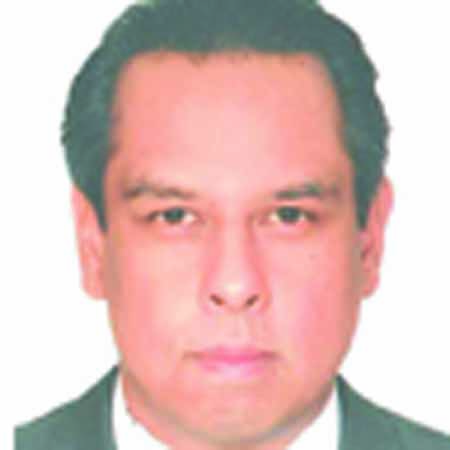Opinion
City of chaos
The total length of vehicles operating in Kathmandu Valley is greater than the length of its roads
Bimal Pratap Shah
I remember Arundhati Roy once said, “If you’re happy in a dream, does that count?” To be honest, I am not sure. A couple of days back, I woke up in a reasonably good mood from a dream that I thought was pretty fascinating. A dream, where I was in a hovercraft similar to the one in the 1999 blockbuster movie ‘The Matrix’. I was in the city of Zion where traffic congestion was a thing of the past.
In the dream, I saw hovercraft Nebuchadnezzar II from ‘The Matrix’. Nebuchadnezzar II is the name of the great Babylonian king who ruled the New Babylonian Empire from 605 to 562 BC. He defeated the Egyptians and their allies, the Assyrians, at Carchemish and took control of all the trade routes across Mesopotamia from the Persian Gulf to the Mediterranean Sea. However, he is most remembered for building the ‘Hanging Garden of Babylon’ in 600 BC for his wife Amytis, the princess of Media. After having lived in Babylon for some time, the princess supposedly started longing for the green hills and valleys of her homeland.
I wonder how the princesses would react if she had to live in the sterile and chaotic city of Kathmandu. More importantly, what would Nebuchadnezzar II do to solve the city’s traffic congestion. Dreams aside, the city’s commuters witness awful traffic congestion on a regular basis, mainly because the city expanded in an ad-hoc manner. On top of that, except one time in 2012, the government, it seems, has made no provision whatsoever to scale up road capacities.
Traffic problem
Traffic congestion occurs when a city’s road network is unable to accommodate the volume of traffic that uses it. The total length of vehicles operating in the Kathmandu Valley is greater than the length of its roads. For instance, according to the Nepal’s Traffic Police, there is only a total of 4.8 million feet of roads for vehicles that total 7.2 million feet. Furthermore, the city’s poor road condition, inadequate road infrastructure, and lack of integrated traffic signaling system are to blame for the unbearable traffic chaos.
However, most of the time, the motorists themselves are to blame for the congestion. We all know, the drivers in Kathmandu are very impatient, rude, uncouth, and hooligan-like, and very bad at following traffic rules. I suspect many of them are not sufficiently trained to follow traffic discipline. Furthermore, the impact of poor lane discipline, especially at traffic junctions, further deteriorates the city’s traffic.
Having said that, the Traffic Police, however, is probably the hardest working government machinery in the country. They somehow effectively manage the traffic in a city that has probably one of the most unscientific roads in the world. They are also going high tech. Recently, they launched an app that allows the public to quickly report and get information about the road accidents. Using the app, the public can now listen to Metro Traffic FM 95.6 without plugging in the earphone.
Government’s responsibility
Now it is time for Singha Durbar to step up and do its part to devise progressive and forward looking policies, plans, and programmes to relieve citizens from the insanity of the city’s traffic congestion. If the government is really serious, I suggest it start using the electric traffic lights that have not been in use for quite some time, and at the same time provide industrial grade anti-pollution masks for the traffic police.
Interestingly, the first electric traffic light was installed in the US in 1914. The traffic lights had red and green lights and a buzzer that provided a warning a couple of seconds before the signals changed. However, the idea of traffic light began in the 1800s in the UK, because controlling the ever-increasing flow of horse-drawn traffic was becoming extremely difficult. Unfortunately, in Nepal, the electric traffic signaling technology that came into existence more than 100 years ago is still not in use.
The country would benefit if the government invested in a Smart City Traffic Management solution powered by the Internet of Things (IoT). The IoT enabled smart transportation system allows the police, emergency services, and other government agencies to use sensor networks to gain citywide visibility and also alleviate congestion. Once the IOT based system is in place, sensors installed all over the city could automatically feed information about traffic congestion and road accidents to the app, providing traffic personnel with the much needed freedom to effectively monitor and enforce traffic rules and punish the violators.
Ministry of Happiness
The problem of traffic congestion has to be solved at any cost, because research shows it is extremely harmful to the health. The vehicles stuck in traffic jams increase pollution, doubling the health risk of the city’s inhabitants. Furthermore, according to the World Health Organisation (WHO), air pollution is to responsible for 3.2 million preventable deaths worldwide every year. In fact, the congestion also contributes to making commutes unhappy.
Till now, it seems the government has not taken any significant steps to improve the traffic situation nor done anything to promote electric vehicles. Therefore, in reality, the only time citizens of Kathmandu can be truly happy is when they are dreaming at night. I do not know if that counts, because unhappiness starts the minute commuters step on the road. Maybe it is time to establish the Ministry of Happiness like in the United Arab Emirates because the existing ministries, so far, have failed to make citizens happy.
Shah is the co-author of ‘Strategic IT Planning for Public Organisations: A Toolkit’ published by the UN in 2009




 14.12°C Kathmandu
14.12°C Kathmandu










